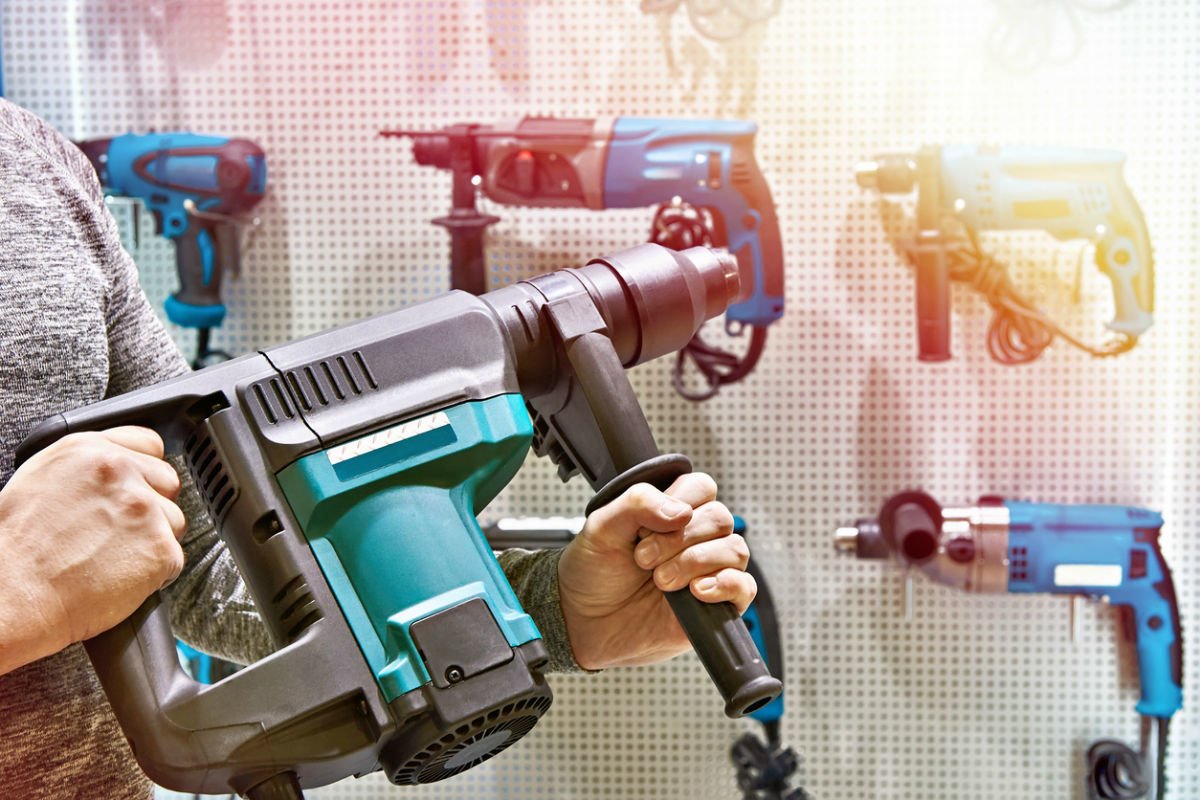

We may earn revenue from the products available on this page and participate in affiliate programs. Learn More ›
Stroll down the power tool aisle at the hardware store and you’ll see a variety of drills and drivers that look fairly similar. Don’t be fooled: Each has subtle differences geared to accomplish different jobs. Whether you’re in the market for a jack-of-all-trades drill or you have a more specific project in mind, learn how cordless drill/drivers, hammer drills, and impact drivers differ before you buy. This guide places them side by side—hammer drill vs. impact driver vs. drill—to help you sort out what you need for your to-do list.
Hammer Drill, Impact Driver, Cordless Drill/Driver: Mechanisms
Perhaps the best way to understand which drill is best for a particular task is to compare their mechanisms and the types of drill bits and drivers they use.
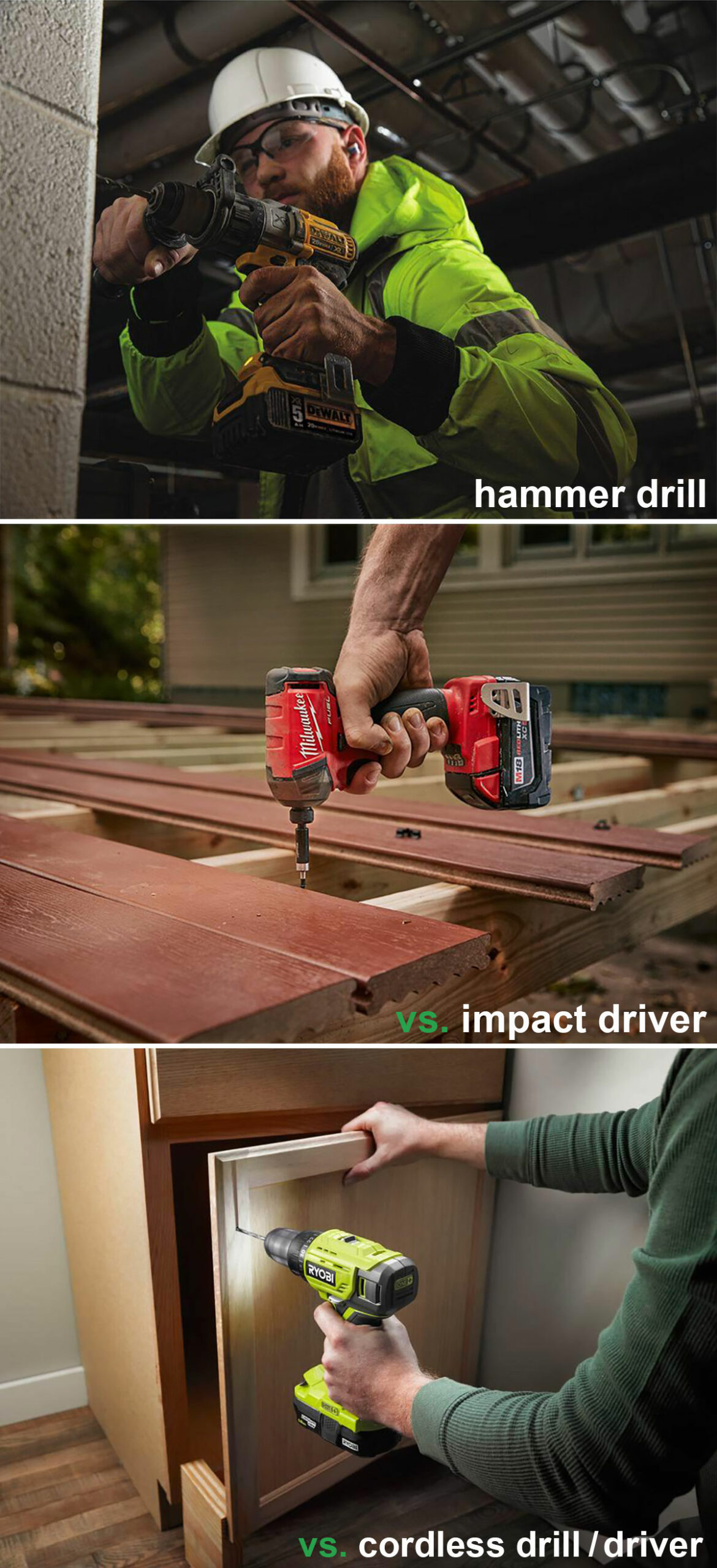
Each type of drill uses a unique motion to get the job done.
The action of a hammer drill is right there in the name: it’s a hammer and a drill working in tandem. While the drill rotates, a gear-driven cam introduces a linear striking motion along the path of the drill bit. In effect, it combines chiseling and drilling in the same tool.
It’s an action that’s particularly effective in drilling brick, cinder block, concrete, and similar materials. However, while heavy-duty slotted drive system (SDS) models are capable of drilling through walls several feet thick, it is not an effective way to drill wood, plastic, or metal. To do that, the hammer action needs to be disengaged. Many hammer drills allow this, though some SDS models do not.
Describing a tool as an “impact driver” might suggest it has a similar action to a hammer. In some ways it does, though an impact driver provides increased rotational energy, better known as torque.
Inside the impact driver body is a heavy-duty spring. It is compressed every half turn then releases, delivering tremendous force. It makes a similar sound to a hammer drill, but the energy goes in the same direction as the chuck rotation, not in a straight line along the drill bit. Thus the focus of the force is to drive screws and other fasteners, or indeed undo them. Early impact drivers were very much brute force, all-or-nothing tools. Modern versions offer greater flexibility with variable speed.
A cordless drill/driver has the simplest action, in that it is purely rotational without any additional force. However, this tool has a different trick up its sleeve: the addition of a clutch.
Small hammer drills can be used to drive screws (some consumer-grade models incorporate a clutch), but many are too large and powerful. Impact drivers are the perfect tool for heavy-duty driving, but most aren’t intended for delicate, precision work. The clutch on a cordless drill/driver allows you to reduce the amount of torque applied to a screw so that when that limit is reached, the clutch slips and the chuck stops rotating. This is valuable when driving into softer materials like wood or drywall, preventing you from accidentally driving the screw below the surface or even, as can happen, right the way through.
RELATED: Our Favorite Drill Bit Sharpener Provided Near-Perfect Results in Our Tests
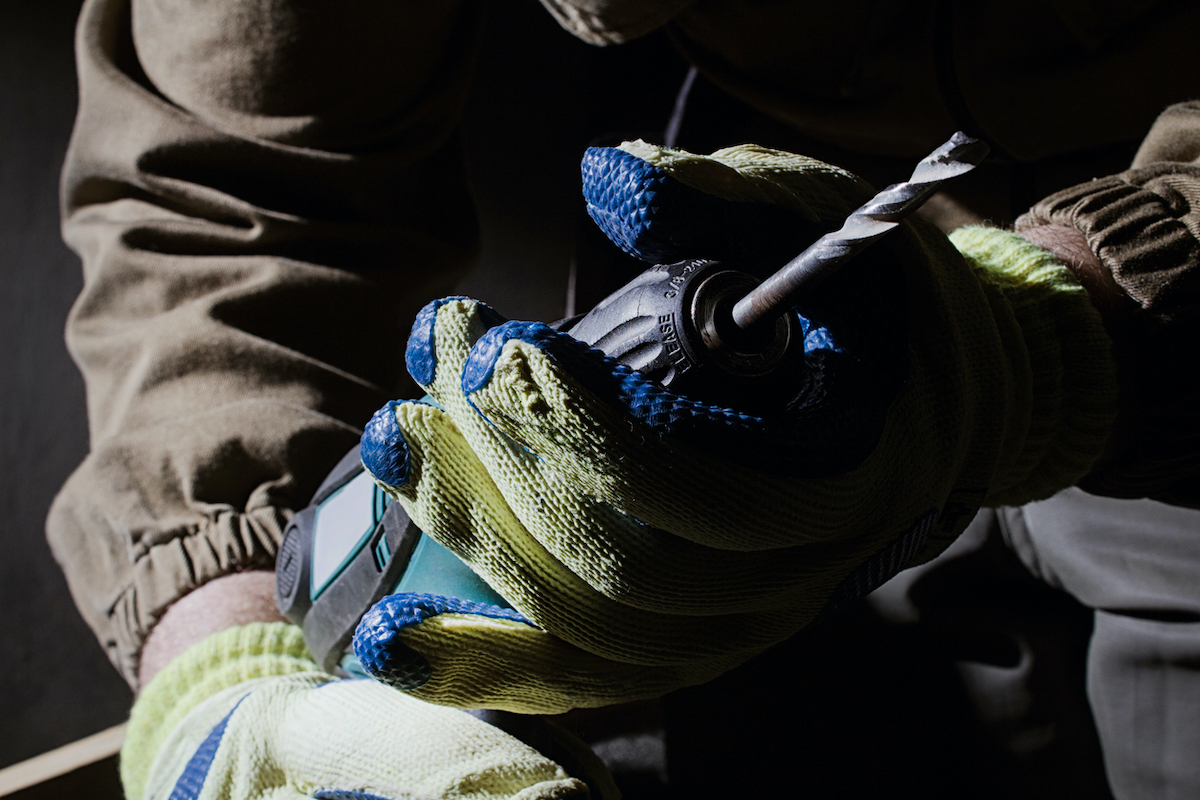
Each has a different chuck and accepts different bits.
Hammer Drills
The majority of hammer drills have a self-centering three-jaw chuck. These are often keyless, but heavy-duty models have a keyed chuck, which allows for a tighter grip on the drill bit. SDS hammer drills have a spring-loaded chuck, with ball bearings that lock into grooves on SDS drill bits. A sliding sleeve releases them.
General-purpose masonry bits for hammer drills have the same round shanks as found on standard drill bits for wood or metal. Many share the same base material, high-speed steel (HSS). Where masonry bits differ is at the tip. It is wider, and designed to chip away at the surface while it rotates. The spiral flutes behind the tip don’t actually cut at all, they are there to funnel waste out of the way.
SDS drill bits are very similar in construction, but the shank is modified to suit the relevant SDS chuck. These give a more secure hold for heavy-duty drilling.
Impact Drivers
Impact drivers don’t have a chuck but instead use a quick-release clamp designed to accept various kinds of bits with a ¼-inch hexagonal shank. Mostly these bits are for driving, though you can buy HSS drill bits with ¼-inch shanks for occasional drilling duties.
Driving bits come in a variety of shapes, so impact drivers can be used with many different fasteners. Straight, Philips, and Torx are among the most common, but there are a half dozen others to cope with all driving needs. You can also find various sizes of sockets and socket adapters to use an impact driver with nuts and bolts.
It’s important to choose “impact ready” bits, which are toughened to handle the power output of an impact driver. Don’t be tempted by less expensive versions designed for a regular drill/driver. They wear quickly under the additional force and might even shear.
Among the accessories available that extend the use of impact drivers are three-jaw drill chucks, right-angle adapters, flexible drive shafts, and hole saws.
Cordless Drill/Drivers
Cordless drill/drivers have a self-centering three-jaw chuck, almost invariably keyless. If the job needs the extra gripping power of a keyed chuck, it probably also needs a more powerful kind of drill.
Three-jaw chucks can be used with both standard round-shank or hex-shank bits for drilling and driving. Various drill bits will allow you to make holes in wood, composites, plastic, and metal. They range from simple round drills through spade ends, Forstner bits, hole saws, and a wide range of speciality bits, some of which we discuss below. All the driving bits that can be used in an impact driver can also be used in a cordless drill, but with significantly less power. If you’re working on delicate projects, that can often be an advantage.
RELATED: How To: Drill Straight 90° Holes (Without a Drill Press)
Drill Bit Materials
Drill bits of all kinds often have ceramic coatings to improve the durability of the cutting edges. Tungsten carbide tipped (TCT) drill bits are the most common. Titanium Nitride (TiN) is also used. TiN-coated drill bits are easily identified by their gold color, but caution is needed. Some manufacturers of cheap drill bits make them gold-colored, though no titanium is present. Always check the specifications before you buy. Specialty drill bits for tile and glass are frequently coated with industrial diamonds.
Hammer Drill, Impact Driver, Cordless Drill/Driver: Applications
Now that you know how each type of drill works, it’s probably a lot clearer which jobs each one is best for. However, there can be overlaps so let’s take a closer look.
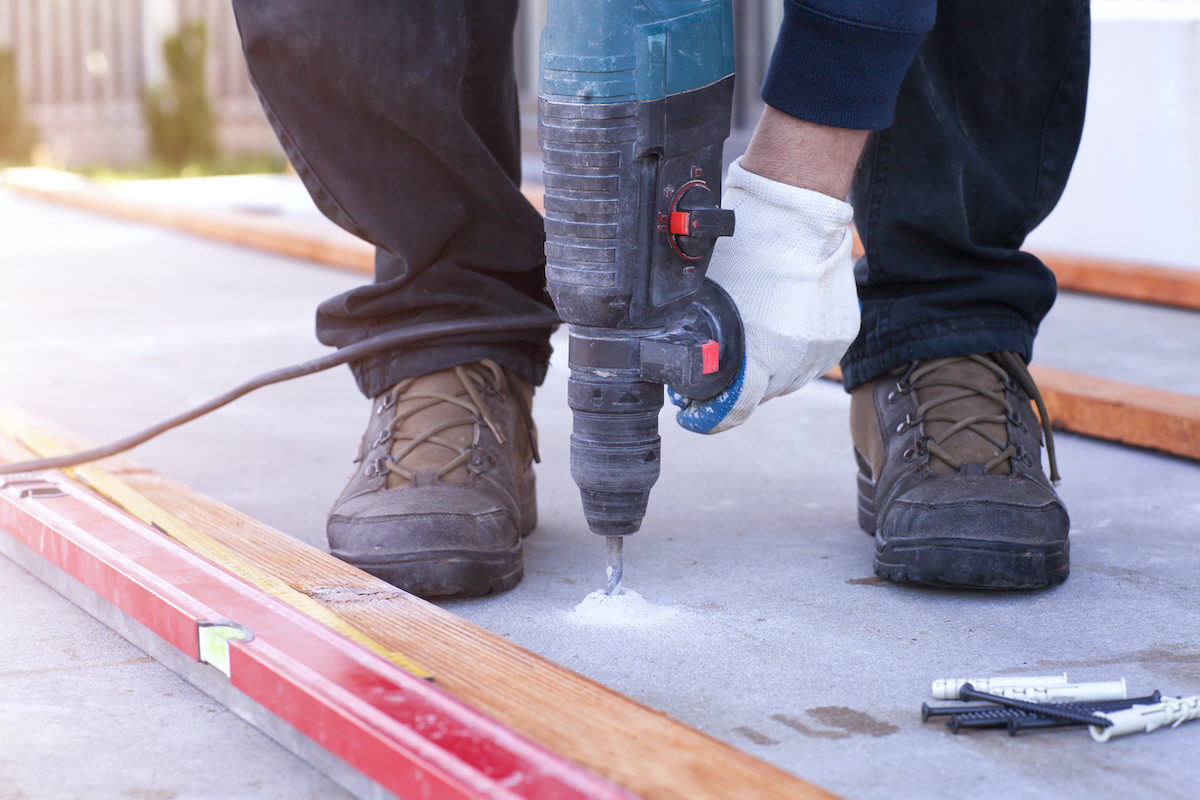
A hammer drill is designed to drill holes into brick, concrete, other masonry, and even rock.
A hammer drill uses a particular type of drill bit designed specifically for these tough materials. A hammer drill is the tool you would turn to for all kinds of tasks from relatively light-duty—like when installing new house numbers on your stone-veneered exterior wall, or hanging shelving on an interior brick wall—to drilling holes through brick or block walls for installation of electric conduit or water pipes.
Hammer drills don’t just bore holes into masonry, though. Most allow you to turn the hammer function off, so with standard drill bits you can use them for the same tasks as cordless drill/drivers. However, care has to be taken. They still deliver a lot of power and can easily break small-diameter drill bits. Additionally, even with the hammer function turned off, most people don’t use them as their regular drill/driver because they tend to be heavier and often require two hands to operate properly.
SDS hammer drills, the most powerful of this type, can be used in hammer mode only, without any rotation. When fitted with masonry chisels, they are capable of tackling minor demolition jobs. They can be a great choice if you’ve got an old garden wall to take down, or a patch of tired asphalt to remove.
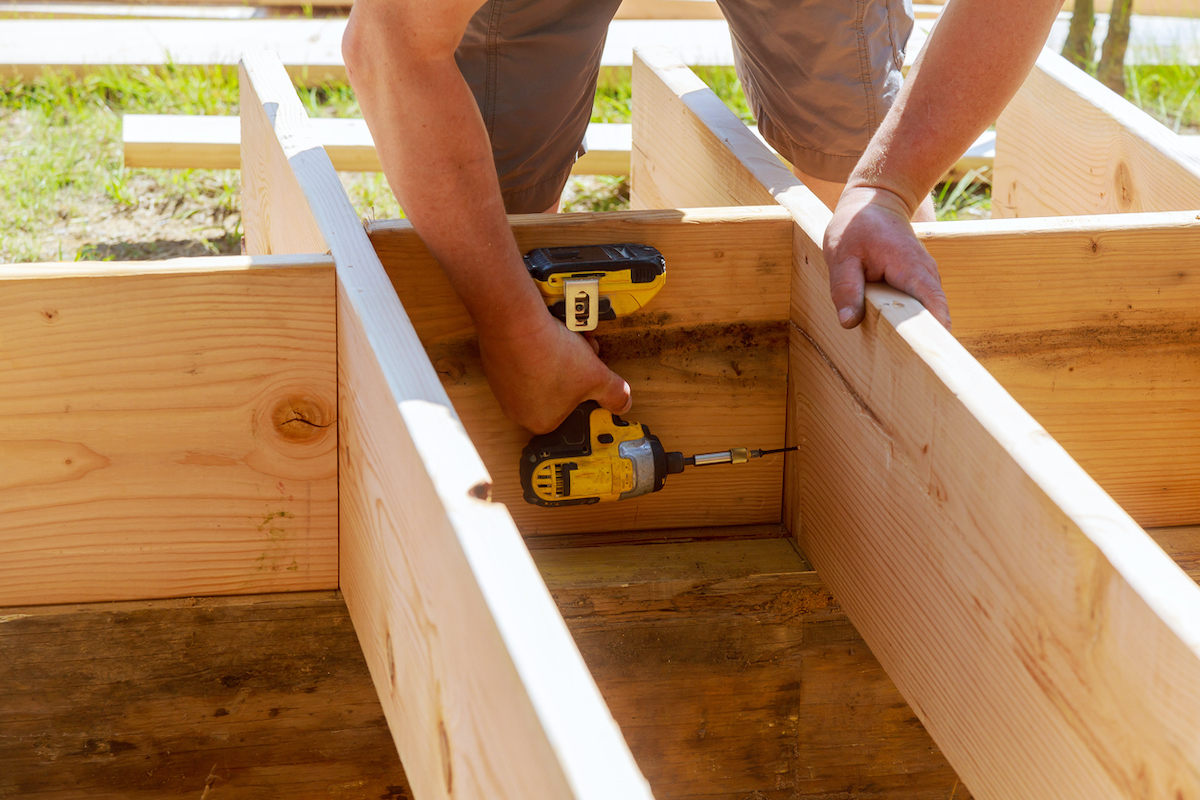
An impact driver is primarily designed for driving screws and other fasteners, with the power to tackle tougher jobs with ease.
Impact drivers are all about rotational force. In essence, they don’t do anything that a cordless drill/driver doesn’t do, but they bring much more power to the task. Typically if you wanted to insert a 3-inch screw into a wooden post with a drill/driver you would first need to drill a pilot hole, then swap the bit over to drive the screw. The impact driver, by contrast, can drive that screw straight into lumber almost effortlessly due to the amount of torque (twisting force) generated. They handle large screws and fasteners far more quickly and efficiently than a cordless drill/driver making them a much better choice for heavy-duty woodworking projects like replacing deck boards or building a pergola.
Although quality impact drivers are the most specialized of the three drills featured, typically used for driving long or large-diameter fasteners into wood, they aren’t without a degree of flexibility. Socket (nut driver) bits can be used for assembling metal frameworks or working on vehicles where they can be used like a light-duty impact wrench.
They can be fitted with hex-shank drill bits or a chuck, much like you’ll find on a cordless drill, and thus can be used for making holes. These are inexpensive accessories and could well be worth adding to your toolkit. Using an impact driver in this way may not be as precise as a cordless drill/driver, but it can be done. If you only have occasional demand, it would save you from carrying two tools around.
RELATED: 9 Handy Uses for Your Cordless Drill/Driver

A cordless drill/driver is a great general-purpose tool used to drill holes, drive screws, and can carry out a range of other DIY tasks.
Many people buy a cordless drill/driver as the first tool in their household toolkit, and with good reason. They are well-rounded enough to tackle a plethora of jobs around the home and garden, and also come with a variety of attachments that expand their versatility even further.
With the right drill or screwdriver bit, they can handle everything from installing a doorbell or gate to putting up a set of shelves on a partition wall to assembling modern furniture. They can be fitted with rotary scrubbing brushes for heavy-duty cleaning or stirrers for paint. Sanding discs and polishers can be fitted for auto repair, or abrasive bits for sharpening lawnmower blades. A little investigation comes up with a remarkably extensive list and makes the cordless drill/driver an invaluable tool for both the DIY enthusiast and the professional contractor.
Hammer Drill, Impact Driver, Cordless Drill/Driver: Key Features
In this section we examine the key features of drills and drivers in general, and the specifics of each type. When it comes to the hammer drill vs. impact driver vs. cordless drill/driver question, this is another way to help you decide which model to buy.
Cordless Features
The vast majority of hammer drills, impact drivers, and drill/drivers are now cordless. However, not all cordless motors are the same. There are two types: brushed or brushless.
Brushed motors are the older kind, originally used in corded drills. It’s cheap, proven technology. While brushes need changing eventually, it’s not a difficult or expensive job. However, the big difference is in how efficient the motors are at using battery power. Brushless motors are more expensive, but in general use 10 to 15 percent less power for equivalent performance. So a brushless tool will run longer than the brushed counterpart between charges. There’s also considerably less friction involved, so in general brushless motors are also more durable.
Hammer drills and, in particular, SDS hammer drills are power-hungry beasts. While most drills and drivers stop at 20V, in order to cope with the demands of professional jobs that need more power, 40V and even 60V hammer drills have been introduced. These are expensive, with the most powerful costing more than $1,000—and frequent battery changes may still be necessary.
The more affordable alternative is to resort to what may seem an old-fashioned solution: a corded hammer drill. These can be very powerful tools and, as a result, there are still many available. If you can work where there is access to power outlets, or you already own a portable generator, they are a cost-effective option.
RELATED: Our Favorite Cordless Hammer Drill Has a Added Feature We Never Knew We Needed
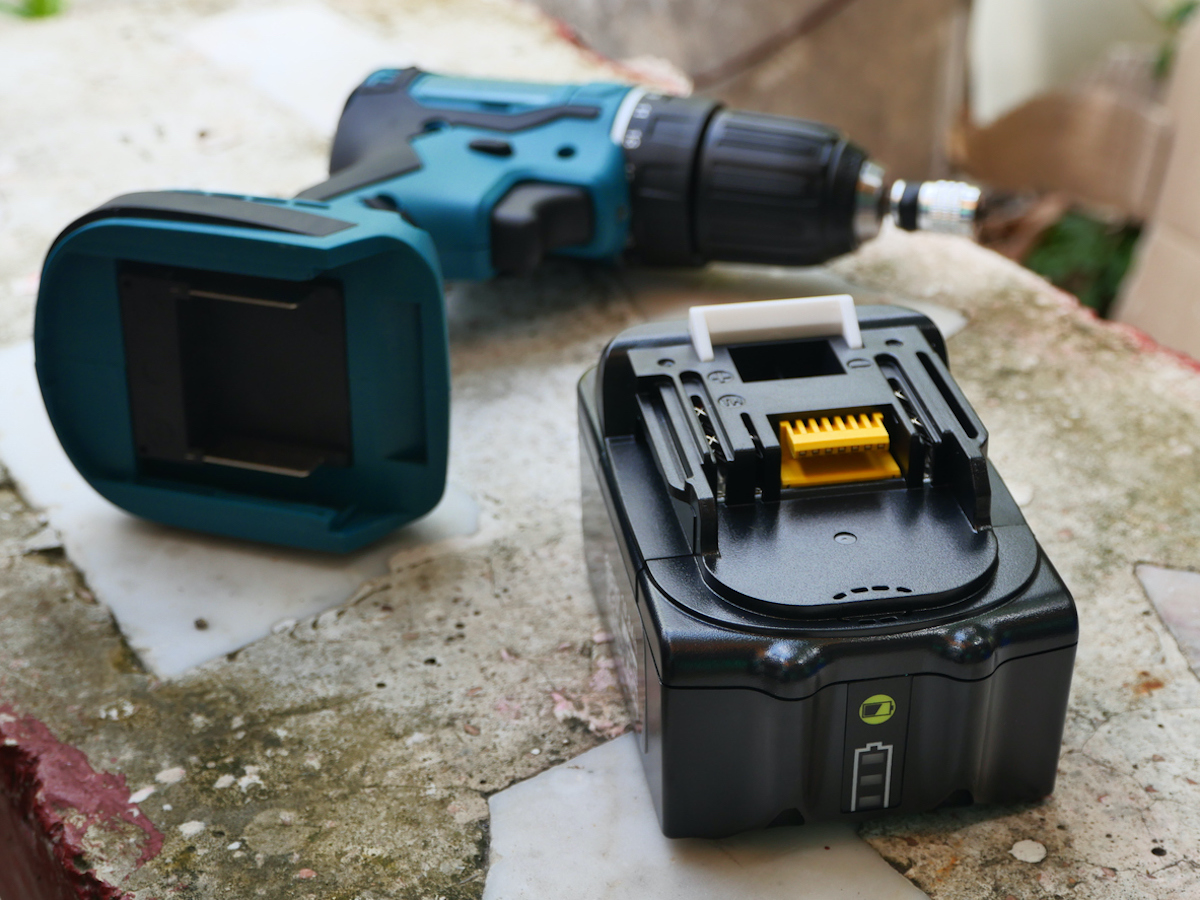
Power Specifications
We’ve already mentioned voltage or volts (V) as a measure of power. In general, 12V drills and drivers are light-duty homeowner tools. A step up in power, 20V models suit the needs of more serious DIY enthusiasts and professionals. Currently only cordless SDS hammer drills offer more power, with 40V and 60V tools aimed squarely at contractor use.
However, each type of drill and driver has specifications that are particular to their type and purpose.
Almost all drills and drivers have variable speed, activated by the trigger. However, this relies on the user exerting sustained pressure, which is easy at full speed but not so much at lower revolutions. Better tools offer two or three speed ranges, so even when the trigger is fully depressed, a slower speed is reached. This gives greater control, which is often useful when using small drill bits, or when starting to drive screws.
With hammer drills you may also get a figure for blows per minute (BPM). This is the speed of the hammer action. It can be anywhere from 1,500 BPM to over 40,000 BPM.
Professional-grade hammer drills may also give an impact energy/EPTA (European Power Tool Association) rating in foot-pounds (ft.lbs.). It is the combination of these figures that is important, rather than just big numbers. High BPM is a feature of DIY tools, but these have relatively low impact energy. Professional hammer drills have lower BPM but higher impact energy. In other words, they hit more slowly, but each strike is much harder.
With impact drivers the key statistic is torque—twisting force—usually given in inch-pounds (in.lbs.), though sometimes in Newton meters (N.m.). 1 in.lbs. is equal to 0.112 N.m., but whichever is given, bigger numbers are better.
Some manufacturers also provide impacts per minute (IPM). If two similar models offer the same torque output, then faster IPM might be the deciding factor, but the torque figure is far more important.
When looking for the best cordless drill/driver, a wide speed range is perhaps the key difference, making it easier to adjust for drilling a wide range of materials. The number of clutch settings is often quoted. You’ll usually get at least 8 or 10 and there’s minimal benefit in having more.
Size and Weight
Physical size and overall weight can be important considerations for whichever type of drill or driver you buy. A heavy tool soon results in operator fatigue, something that’s made worse if you regularly have to work overhead.
Hammer drills can be especially bulky. Many, particularly SDS models, have an additional handle at the front that gives a clear indication that the tool needs to be operated with both hands. This should not be ignored. If a drill bit jams while cutting through thick masonry or rock, the drill body itself will try to rotate. This happens suddenly and because of the weight and the energy transferred can cause serious wrist injury to those who are unprepared.
Similar though less severe injuries are possible when you use impact drivers, so caution is advised. Always make sure you have a firm grip on the tool. However, when looking at the physical size of an impact driver, your main consideration will be getting the tool onto the fastener. If you’re working in the open it’s unlikely to be an issue. If you need to work in confined spaces you’ll want a compact model, and some are designed specifically for the purpose without sacrificing power. The same can be true of drill/drivers. A feature of some models is that rather than having a bulky battery hanging off the end of the handle, it fits inside. The resulting tool can be very small and easy to manage.
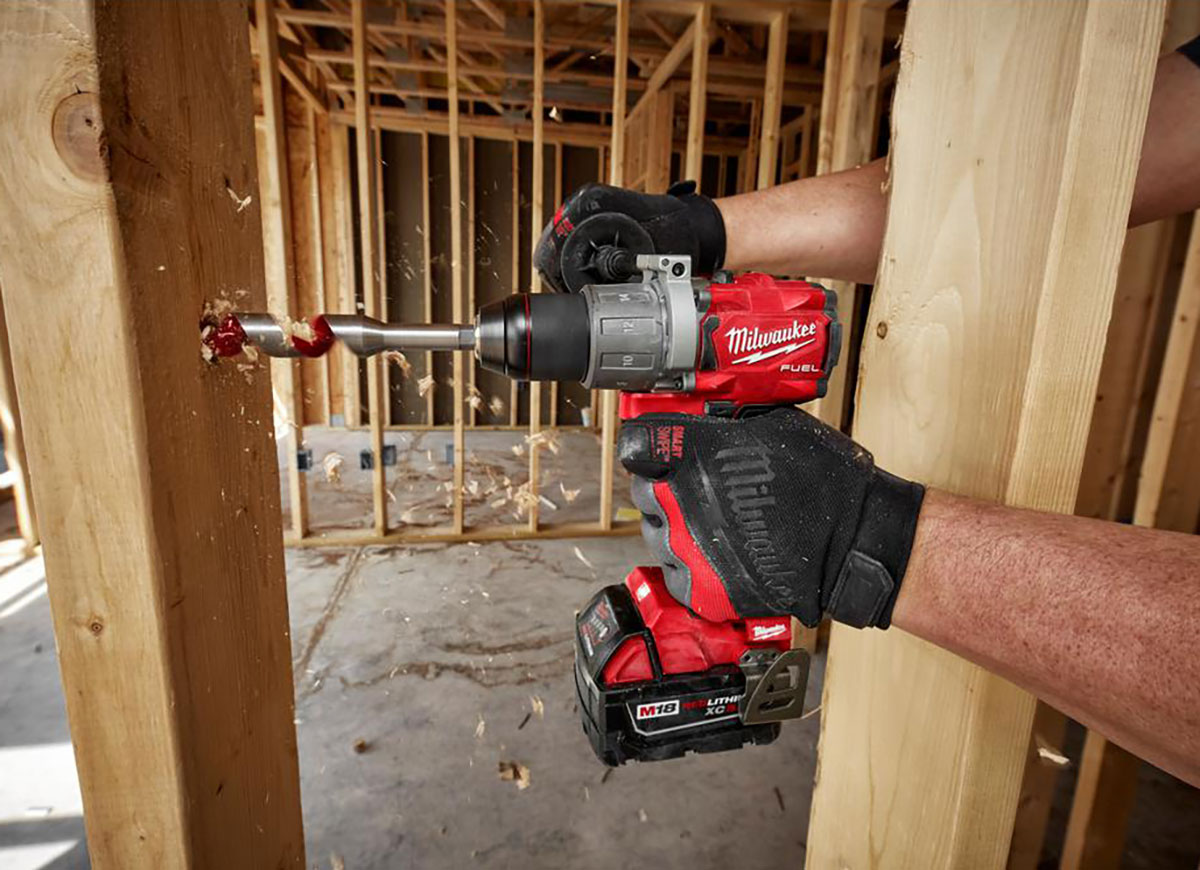
Common Questions About Hammer Drills vs. Impact Drivers
Can a hammer drill be used as an impact driver?
It would be nice to give a straightforward yes or no answer, but unfortunately it’s not that simple. Strictly speaking, a hammer drill can be fitted with a screwdriver bit and, with the hammer action turned off, could drive screws and other fasteners.
However, most hammer drills are bulky tools designed for two-handed operation. As such, they are not well suited to working with fasteners where you often want to use a free hand to start things off.
Can a hammer drill be used as a regular drill?
The majority can, though it is important to turn the hammer action off. That feature is designed for drilling holes in concrete, brick, masonry, etc., and punches a particular type of drill bit into the surface. If the same force was applied to standard high-speed steel drill bits it would likely shatter them.
Even if it didn’t, in soft materials like wood and plastics the hole created would be very ragged. In hard materials like metal the drill bit would bounce around on the surface and be almost impossible to control. In general, SDS hammer drills are simply too big and powerful for ordinary drilling duties.
Can an impact driver drill holes?
In many materials, yes, though it does not have the percussive action of a hammer drill, so impact drivers cannot drill holes in brick, cinder block, etc.
You’ll either need a set of drill bits with ¼-inch hexagonal shanks or buy a keyless three-jaw chuck with a ¼-inch shank. The latter will let you use either hexagonal bits or standard drill bits with round shanks.
RELATED: Solved! When, Why, and How to Use Pilot Holes Correctly
Use the price to guide you.
Cost is a consideration for most people. While investing in powerful tools with high-end features is never a bad idea, there are times when buying a budget model for occasional use is equally valid. You might, for example, choose a high-quality cordless drill/driver because there are lots of different jobs for it around the home and yard; then buy a budget hammer drill if the need arises. In the past it has sometimes been more economical to rent a hammer drill, and if you need an SDS model that might still be the case. However, some general-purpose tools now cost less than a half-day’s rental.
Cordless drill/drivers can be very affordable and if you’re only going to buy one type of drill, this is the one. DIYers with minimal demands, where driving screws is as important as drilling holes, should consider the popular Black+Decker 12V Max, which can be found for well under $50. High-quality household drill/drivers can reach $150-plus, with the Makita 12V Kit being a prime example. It’s a complete package with charger, case, and spare battery.
Hammer drills are perhaps the next most popular tool and if you don’t mind a cord, the 6-amp Tacklife at around $40 is an excellent choice for occasional DIY use. At the other end of the scale, powerful and versatile hammer drills like the DeWalt 20V Max XR and heavy-duty SDS hammer drills can top $250.
It’s not difficult to find good, low-cost impact drivers. At around $55 the Avid Impact Driver Kit includes screwdriver and nut driver bits. High-end models again run $150 to $200, though it’s always worth looking for combo deals. The one from DeWalt offers terrific value with a 20V drill/driver and 20V impact driver within that price range.
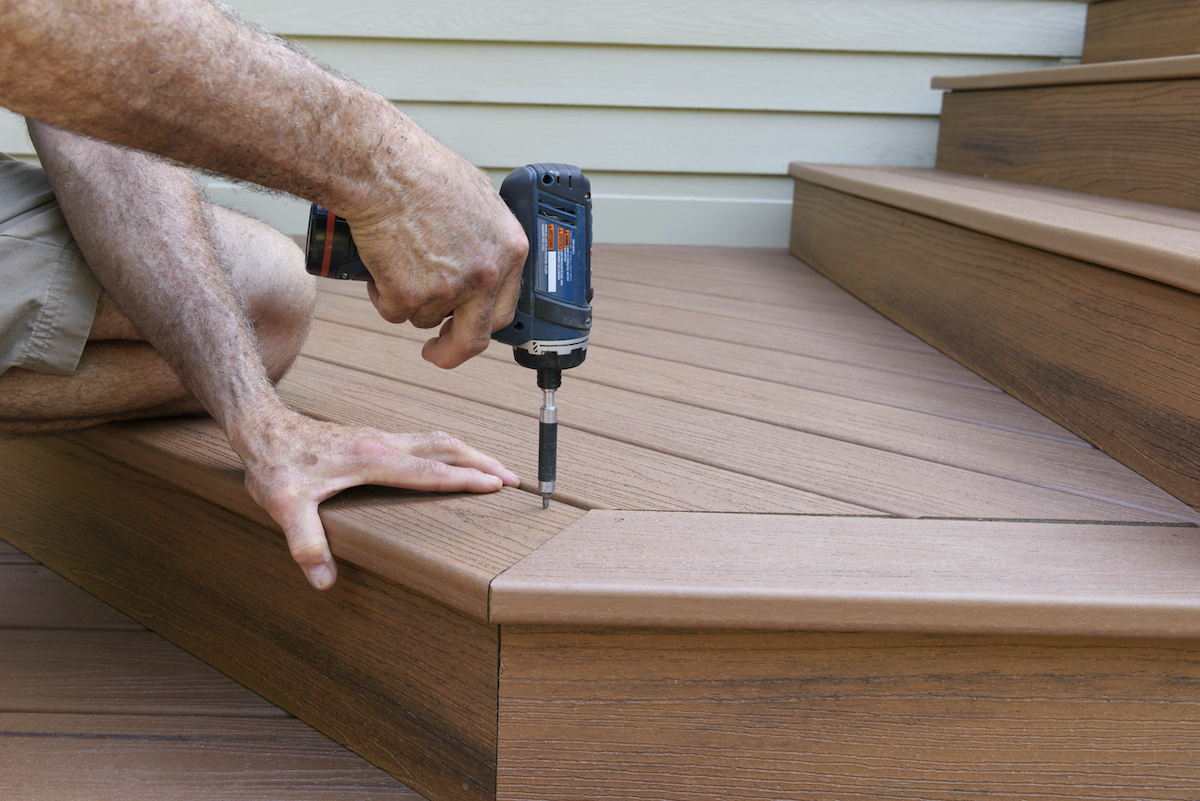
Buying Drill Batteries
The majority of today’s hammer drills, impact drivers, and drill/drivers are cordless, but it’s not always clear which is the best drill battery, particularly if you’re buying a spare.
There are two specifications to consider, voltage (V) and amp-hours (Ah). Voltage is basically the amount of performance available. The higher the voltage, the more power the drill generates. Voltage is not interchangeable. If you have a 12V drill, you need a 12V battery. You can’t use a 20V battery, or vice versa.
Another aspect that sometimes confuses people is that of 10.8V versus 12V, or more commonly 18V versus 20V tools. These are tools from different manufacturers that frequently have very similar specifications, except this odd variation in voltage.
In fact, 10.8V batteries are exactly the same as 12V batteries and, likewise, 18V batteries are the same as 20V batteries. The difference is not in performance, but in how they are being described.
All electrical devices produce a momentary surge in demand when they are first turned on, and then in a fraction of a second settle back to a normal running level called nominal voltage. The higher figure quoted (we suspect because higher is more impressive) is the initial surge voltage. The lower figure is the nominal. Most manufacturers state this somewhere in the fine print, but are still inclined to advertise their tool as a 20V model, for example, rather than an 18V because the latter might be perceived as less powerful even if in reality it is the same.
The other figure to look at, amp-hours, is like fuel. Ah has no relationship to voltage. So you can have, for example, a 12V 2Ah battery, or a 12V 4Ah battery for the same tool. The 4Ah version holds more charge (fuel), so it will run the tool longer.
If you just use a drill for occasional DIY jobs, the Ah of the battery probably won’t be an issue. You can stop work and recharge it. Contractors who need a drill to be available all the time will want to maximize Ah, especially if buying a spare. Not surprisingly, higher Ah means a higher price, so you’ll need to balance that against the convenience of being able to work longer.
The other thing to be aware of is the “bare tools” issue. It is possible to find great deals on drills sold this way, but it’s important to realize that a bare tool means you don’t get a battery or a charger. If you already have compatible items from other power tools you own, that’s great. Batteries from your old drill/driver might fit your new hammer drill, for example. However, they also might not—even if they are the same physical size, voltage or Ah, and from the same brand. There have been numerous changes in battery technology over the last few years, so it’s vital to check compatibility carefully before buying.
